Helping History Students Think for Themselves
Jennifer Ingold wants her history students to make the connection between primary-source research and preparation for informed and civil disagreements. Learn about her MLK historical scene investigation activity and a virtual History Symposium among students in New York and Florida.
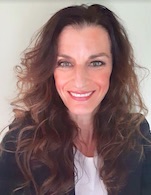 By Jennifer Ingold
By Jennifer Ingold
“Can disagreements be dangerous?” I asked my 8th grade history students in one of our frequent polling sessions. The vast majority chose, “Sometimes. It depended on the circumstances.”
When I asked when or how, their open-ended answers ranged from “If a person or group disagrees with you, you can get shamed, canceled or in some cases, even could get physically hurt” to a bit deeper, noting things like “disagreements between parents can even ruin their kids’ relationships.”
Then, changing gears, I asked: “Where do you get most of your information from?” Again, using a real-time student PearDeck poll, the most common answer was no surprise: social media and the internet. The most intriguing part came when the majority of the class agreed that neither one was a particularly reliable source of information.
When I asked “So why then do kids keep coming back?” the popular answers were “It’s too easy” and it’s “at your fingertips!”
“But,” I persisted, “doesn’t that keep us from doing the real work of finding things out for ourselves?” Nods and shrugs.
We continued to pursue the question of exactly what “disagreement” can look like.
“Ever see a toddler in a toy store who’s not getting their way?” I asked. They just laughed. On a more serious note, we talked how about the “follow the leader” mentality can sometimes lead to loud disagreement, even violence, when someone contradicts a favorite leader.
“if everyone in our crowd is doing it or saying it, it must be true, right? “ I inquired. Their expressions were priceless. While they all agreed that thinking for yourself was a much better option, it’s so much easier to follow the lead of others. Thinking for yourself can be tough, especially when you are a middle schooler.
Beyond the Text: Investigating Primary Sources
Disagreements often arise from misinformation or misleading interpretations, resulting in major differences of opinion. The reason for our classroom conversation about “finding out for ourselves” was simple. Our individual and constitutional rights can also be viewed as simply words we read on a textbook page – or what someone tells us they are in a social media post.
But there is a stark difference between just reading the words about “rights” and understanding the history behind them and how to apply them by taking informed action.
This is where thinking and exploring for ourselves becomes truly empowering. If we left the story of Angel Island up to the textbook, we’d learn on page 626, “Asian Immigrants entered through Angel Island in San Francisco Bay after 1910.” The end. The reality of Angel Island stays hidden unless we engage and discover.
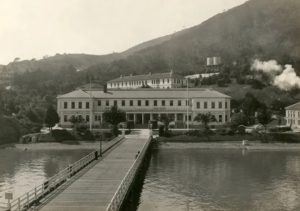 Angel Island “functioned as both an immigration and deportation facility, at which some 175,000 Chinese and about 60,000 Japanese immigrants were detained under oppressive conditions, generally from two weeks to six months, before being allowed to enter the United States.” (Source)
Angel Island “functioned as both an immigration and deportation facility, at which some 175,000 Chinese and about 60,000 Japanese immigrants were detained under oppressive conditions, generally from two weeks to six months, before being allowed to enter the United States.” (Source)
History is peppered with policy missteps, half-told stories of disagreements gone wrong, from obvious abuse of power to forced isolation and extreme inequality. But, sometimes people get it right.
One such individual was Dr. Martin Luther King Jr, who dared to take on two of the most divisive, controversial issues of his time, extreme injustice and social inequality. He knew one thing that all great change agents know, that there needed to be congruence between his actions and his words.
On August 28,1963, a great many Americans watched Dr. King declare that “I Have A Dream.” The March on Washington brought an energy for social change that would transform a generation. “How are the life lessons of Dr. Martin Luther King Jr. still relevant today?” I asked my students. To find the right answers, you need to ask the right questions. And often, go beyond the textbook.
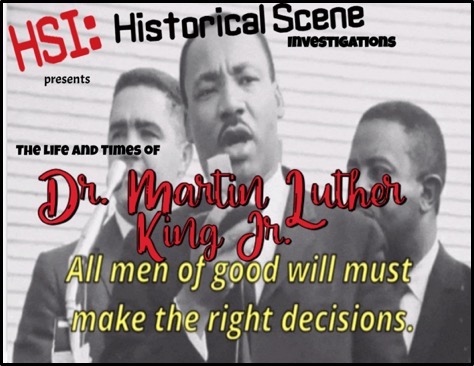 Courtesy of J.Ingold, from materials for HSI: Dr. Martin Luther King, Jr Project, Historical Scene Investigation (14 January 2022)
Courtesy of J.Ingold, from materials for HSI: Dr. Martin Luther King, Jr Project, Historical Scene Investigation (14 January 2022)
MLK: An Historical Scene Investigation
Historical scene investigations introduce students to the idea of taking history “beyond the book” into the realm of the real world where students seek out primary sources, acquire information for themselves, examine diverse perspectives and learn to appreciate others’ world views.
When I asked the class what they knew about Dr. Martin Luther King Jr., answers ranged from “a champion of Civil Rights” to “He led the Montgomery Bus Boycott” to “He was about non-violence, peaceful protest and was a preacher.”
Most had heard of him, but few understood how impactful his life really was to ordinary people, like Florida seamstress Georgia Reed. Although she was crippled by polio, Georgia Reed was inspired by Dr. King’s message of tolerance and love – enough to lead the cause for civil rights on her crutches, dressed in her best, to downtown St. Augustine, Florida in the 1960’s.
My students were also introduced to a more personal side of the life of Dr. Martin Luther King, Jr. by listening to his sister, Ms. Christine Ferris, who paid tribute to his life during 2013’s 50th Anniversary of the March on Washington.
Students listened to respected African American historians’ views, which continued to build fresh perspectives and garnered within them a new appreciation for the meaning behind the man whose life and legacy transformed a nation. A life lived by faith, devoted to freedom and guided by principles of true democracy.
Finally, watching the original ABC newscast from November 2, 1983, students saw how history and the MLK holiday are irrevocably intertwined when a bill signed by President Ronald Reagan declared the third Monday of January each year “Dr. Martin Luther King, Jr. Day.”
They learned that even battling politicians had the capacity to put aside their differences and pay tribute to the man who knew how to fight such decisive battles so valiantly. They came to see how much we can learn from one another and to understand the value in having substantive, civil conversations about our disagreements.
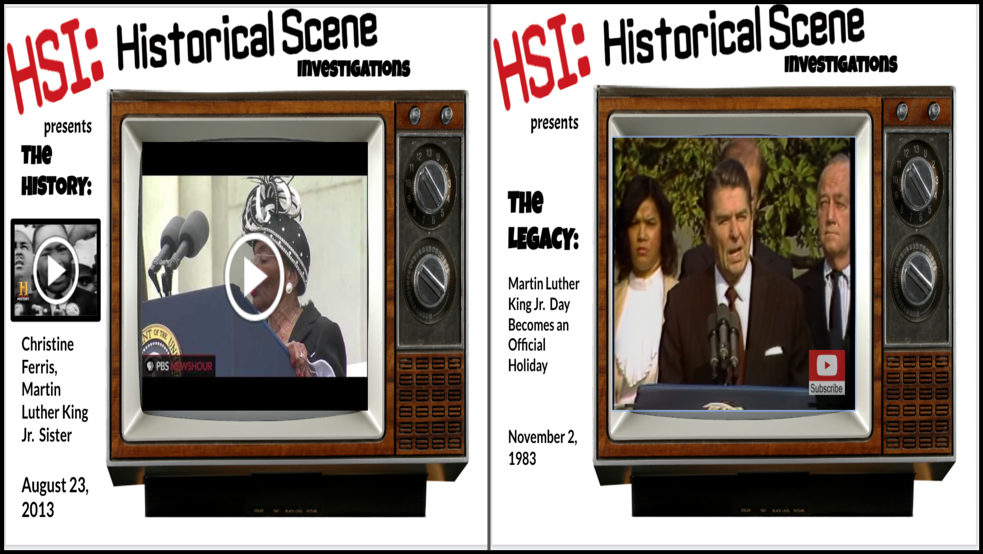 Courtesy of J.Ingold, from materials for HSI: Dr. Martin Luther King, Jr Project, Historical Scene Investigation (14 January 2022)
Courtesy of J.Ingold, from materials for HSI: Dr. Martin Luther King, Jr Project, Historical Scene Investigation (14 January 2022)
Student Advocacy in Action: A History Connect Symposium
A Florida APUSH teacher – the former Brigadier General Vincent T. Buggs – and I share a common vision for student advocacy. A live virtual History Symposium between his AP U.S. History students at Newsome High School in Lithia, FL and my Bay Shore (NY) middle school students focused on further honoring Black History and helping all students to learn how to create community by first celebrating diversity.
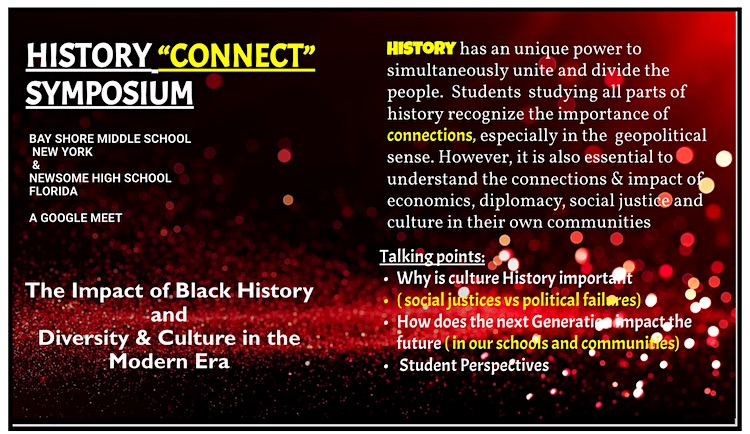 Courtesy of J.Ingold, materials, Historical Symposium with Newsome High School
Courtesy of J.Ingold, materials, Historical Symposium with Newsome High School
Some sample dialogue:
“A day or one month isn’t enough to celebrate a culture, not just Black History, culture should be celebrated or embraced everyday. … One month isn’t enough to describe everything a certain culture or ethnic group has gone through.” – Christopher, age 13. Bay Shore Student
Newsome High junior Matt M. added, ”Our school needs to do better in bringing awareness to the importance of Black History; as student government president this has been one of my goals this year.”
Bay Shore students grew the conversation. “We did a Black History Bento project, where we learned about other famous African Americans who are not in our history books,” commented Geneva. “I think you guys are honestly on a roll and I think our school could do better,” replied Newsome’s Kayla H.
“In the [symposium], the importance of inclusivity in school programs and history was discussed. Hearing other people’s perspectives on topics was thought-provoking and opened my eyes to many different issues I had previously overlooked.” – Lazina, age 13. Bay Shore Student
Black History is American History
Black History is part of “The Story of US” – the United States as a society, a nation and most of all, a humanity. Dr. Martin Luther King Jr. knew this.
The Modern Equity Movement begins with student advocacy. What does it look like? Open conversations between schools, interaction with communities, and a passionate confidence students develop as they become authors of their own stories.
We have a responsibility to honor the vision of Dr. King’s dream by giving the next generation valuable access and opportunities to learn how to better write the next chapter as we continue, together, to tell our American story.
Why I Teach Students to “Respectfully Disagree”
Promoting diversity, inclusivity and tolerance for others – and the need to listen to their perspectives and worldviews – is part of the vision for what I do as a social studies teacher every day. It’s worth my time.
Daily and routine conversations on how to “respectfully disagree” can help build tolerance for the expression of all viewpoints. From simple “turn and talk” activities to more organic THINK. PAIR.SHARE.COMPARE group work, exercises in sharing alternate viewpoints should be practiced freely and often.
Students need to understand that real knowledge (and power) is often found when you go beyond the book to learn the “Art of Disagreement.” Varied student opinions can be used as tools that can promote thought and invoke change.
Celeste Headlee, author of “We Need to Talk: How To Have Conversations That Matter,“ said it best :
“We must learn how to talk to one another and, more important, listen to one another. We must learn to talk to people that we disagree with, because you can’t unfriend everyone in real life.”
Actions matter. Words matter. Change your words. Change your world. History has proven that “Dr. Martin Luther King, Jr. got it right,” I tell my students. “Now it’s your turn.”
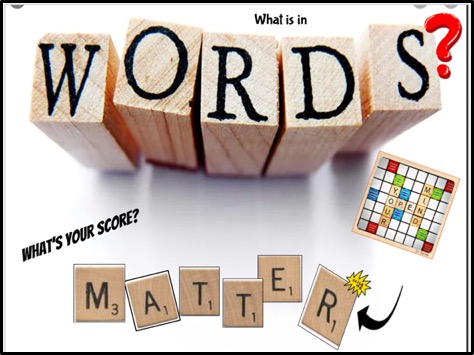 Courtesy of J.Ingold, from materials for HSI: Dr. Martin Luther King, Jr Project, Historical Scene Investigation (14 January 2022)
Courtesy of J.Ingold, from materials for HSI: Dr. Martin Luther King, Jr Project, Historical Scene Investigation (14 January 2022)
Jennifer Ingold (@msjingold) was chosen as both the NCSS and NYSCSS Middle School Teacher of the Year in 2019 and has received the Cohen-Jordan Secondary Social Studies Teacher of the Year Award from the Middle States Council for the Social Studies. In April 2022 the Organization of American Historians (OAH) named Jennifer the OAH’s 2022 Mary K. Bonsteel Tachau Teacher of the Year.
Jennifer currently teaches eighth grade social studies at Bay Shore Middle School in Bay Shore, New York. She has been a speaker at local, state, regional and national conferences, is a lead blogger for C3Teachers.org, and has had her work featured in major publications such as Social Education, Middle Level Learning, and AMLE Magazine. And, of course, MiddleWeb.


































I enjoyed your commentary and especially getting students to think beyond the textbook. I taught humanities for 10 years to high performing 6th graders and would emphasize the deep analysis of historical events utilizing primary and secondary sources, and looking for the facts behind the facts, and more. Discussing various and sometimes competing viewpoints (historical figures as heroes or hypocrites for example) was often stimulating and enlightening.